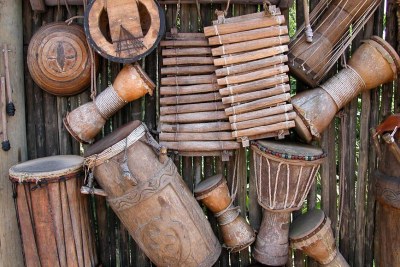-
Africa: How the Music of an Ancient Rock Painting Was Brought to Life
The Conversation Africa, 29 June 2022
Archaeologists spend a lot of time examining the remains of distant pasts, which includes the study of rock paintings. This is largely visual work - but sometimes we can "hear" the… Read more »
-
Tanzania: New Ancient Rock Art Found in Tanzania
East African, 22 March 2021
Tanzania's prehistoric art heritage was recently enriched by the discovery of new rock art motifs. Named the Amak'hee 4 paintings, the newly discovered rock art is located in the… Read more »
-
Africa: Ancient DNA Helps Reveal Social Changes in Africa 50,000 Years Ago That Shaped the Human Story
The Conversation Africa, 23 February 2022
Every person alive on the planet today is descended from people who lived as hunter-gatherers in Africa. Read more »
Ancient African Rock Painting Brought to Life Through Music
Archaeologists spend a lot of time examining the remains of distant pasts, which includes the study of rock paintings, write Neil Rusch and Sarah Wurz for The Conversation.
A new study has revealed that a rock painting from the Cederberg Mountains in South Africa's Western Cape Province. The human figures in this painting have previously been interpreted as healers holding fly-whisks and doing a trance dance. Fly-whisks were an important accessory for the dance because they were thought to keep arrows of sickness at bay.
But results suggest that the fly-whisks are in fact musical instruments of a type known as a !goin !goin - a name that only exists in the now-extinct Xam language that was spoken by hunter-gatherers in central southern Africa. The !goin !goin is an aerophone; these instruments produce sound by creating vibrations in the air when they are spun around.
To reach this conclusion researchers combined digital image recovery techniques with instruments created from life-size templates based on their findings. The eight instruments were played in a Cape Town sound studio and the sounds were recorded.
InFocus
-
Ethiopia's ancient civilisations are believed to date back more than 3,000 years. Many of the country's most famous ancient artefacts are found in Tigray. The region has been ... Read more »
-
Several countries across the African continent are currently embroiled in war. Some of those worst hit are South Sudan, Read more »
-
Although locally produced drums are an integral part of music of various ethnic groups in Cameroon, this traditionally handmade instrument is falling into disuse as modern ... Read more »

Kondoa Irangi Rock Paintings - Together with artifacts from the past, ancient DNA can fill in details about our ancient ancestors.




